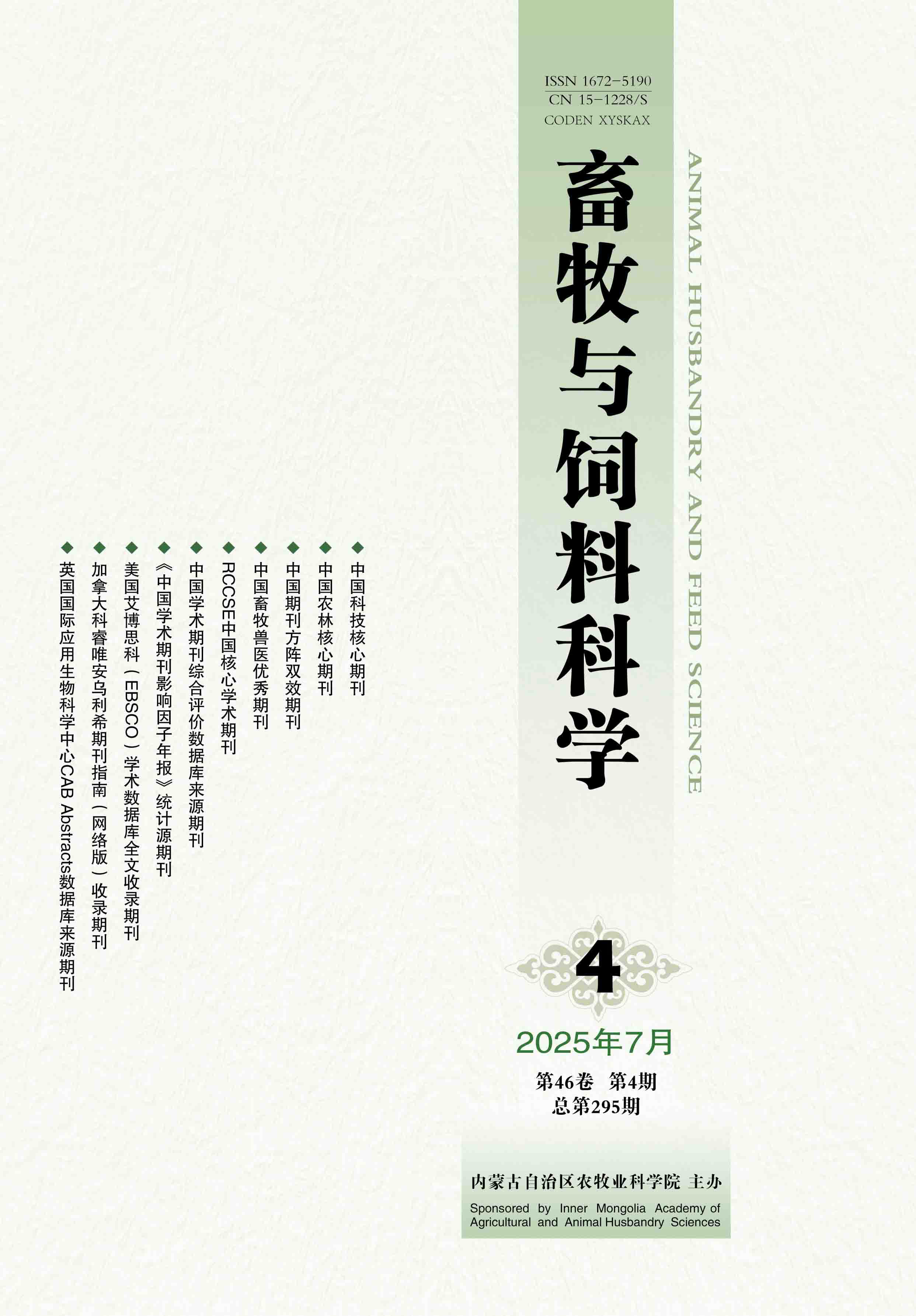Select
Effects of Water-Fertilizer Coupling on Growth, Yield, and Quality of Atriplex canescens
ZHANG Yue, SHENG Jinhua, ZHANG Xiongjie, CUI Yingjiao
2025, 46(4):
45-55.
doi:10.12160/j.issn.1672-5190.2025.04.007
Abstract
(
51 )
PDF (1355KB)
(
6
)
Save
References |
Related Articles |
Metrics
[Objective] To investigate the regulatory effects of water-fertilizer coupling on the growth characteristics, photosynthetic physiology, nutritional quality, and yield of Atriplex canescens, and to provide a basis for its high-quality and high-yield cultivation in arid and semi-arid regions. [Methods] A two-factor split-plot experiment was conducted at the East Science and Technology Park of Inner Mongolia Agricultural University in Hohhot, Inner Mongolia. The main plot consisted of four organic fertilizer levels (F0: 0 kg/hm2 ; F1: 750 kg/hm2 ; F2: 1,500 kg/hm2 ; F3: 2,250 kg/hm2 ), and the subplots included three irrigation frequencies (W0: 0 times; W1: 3 times; W2: 6 times), resulting in 12 treatments with three replicates. The irrigation volume was controlled at 2.5 L per plant by pit irrigation. Morphological indicators (plant height, basal diameter, canopy width), photosynthetic parameters (intercellular CO2 concentration, net photosynthetic rate, stomatal conductance, transpiration rate, leaf water use efficiency), stress-resistance-related physiological indicators in leaves (soluble sugar, soluble protein, proline, malondialdehyde content, and superoxide dismutase, catalase, and peroxidase activities), nutritional indicators (crude protein, crude fat, crude fiber content), and yield were measured. Two-way analysis of variance and multiple comparisons were performed using SPSS 26.0, and principal component analysis (PCA) was employed to comprehensively evaluate the overall effects of different water-fertilizer treatments. [Results] Fertilizer application rate significantly (P<; 0.05) or highly significantly (P<; 0.01) affected all indicators except canopy width, with the F2 treatment showing the optimal effect: plant height and basal diameter increased by 23.56% and 41.26%, respectively, compared to F0; net photosynthetic rate increased by 40.31% compared to F0; crude protein (20.30%) and crude fat (2.48%) contents were the highest; and yield (11,286.63 kg/hm2 ) increased by 43.16% compared to F0. F3 (excessive fertilization) led to increased proline content, a decrease in crude fat content to 1.98%, and a 12.9% reduction in yield compared to F2. Irrigation frequency had no significant effect (P>; 0.05) on plant height, canopy width, intercellular CO2 concentration, stomatal conductance, or leaf water use efficiency, but significantly (P<; 0.05) or highly significantly (P<; 0.01) affected the remaining indicators: plant height and basal diameter under F0-F2 increased with higher irrigation frequency, while those under F3 decreased with increased irrigation frequency; no significant differences in morphological indicators were observed between W1 and W2 under the same fertilizer treatment; net photosynthetic rate increased with irrigation frequency across all fertilizer treatments. The F2W2 combination achieved the highest yield (92.1% higher than F0W0) but showed no significant difference compared to F2W1. Water-fertilizer interaction had a highly significant (P<; 0.01) effect on four leaf stress resistance-related physiological indicators (soluble protein content, proline content, superoxide dismutase activity, and catalase activity), but no significant effect on other indicators. Principal component analysis results indicated that F2W1 had the best comprehensive effect, followed by F2W2. [Conclusion] Under the experimental conditions, a moderate fertilizer level (F2: 1,500 kg/hm2 ) combined with a moderate irrigation frequency (W1: 3 times) was the optimal cultivation model for achieving high-quality and high-yield A. canescens. This model synergistically enhances growth, photosynthetic capacity, nutritional quality, and yield. Excessive fertilization easily induces osmotic stress in A. canescens, which should be avoided in practical production.








